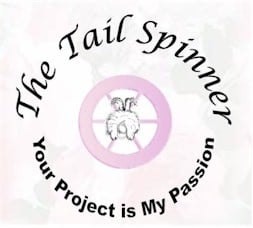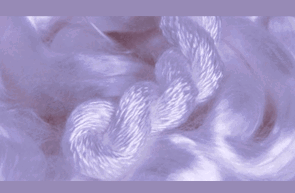Posted by Linda Davis on 7/26/2019 to
Fibers
Think about it! Natural fibers have been around for a long, long
time; and they continue to be superior to man-made fibers. They are not
newcomers making promises based on brief laboraty tests. In the big
scheme of things, the term "Natural Fibers" is relatively new. It came
about when "manufactured" fibers made it necessary to make a
distinction.
Natural fibers come from animals,
plants, insects, and minerals. I often ask the children who attend our
local Heritage Days, what animal fibers could be used for spinning; and
naturally, I get some unique answers: bears, squirrels, cats, dogs,
horses, and even a woolly mammoth! But then, there are those who say:
sheep, goats, alpacas, llamas, camels, and others. This gives me hope
that our youth are doing okay. In essence, any fiber can be spun;
however, our ancestors realized early on that some fibers were simply
not suitable for spinning. I am a pragmatist in some ways, and I rely
on some common sense. If bear fur has not been used for spinning, then I
more than likely will not give that a try. However, I am up for
anything that has actually been done in the past.
The
most wonderful thing about natural fibers is that they are a part of
nature's life cycle. They are a renewable resource, biodegradable, and
pose no harm to our environment. Wool, silk, cotton and flax were the
predominant fibers for centuries; however, today we can enjoy many more,
such as, bamboo, soy, and corn fibers. Another aspect that has
significantly changed is the world has grown smaller! I don't mean that
literally, but we now can get fibers from all over the world and do not
have to rely on what is in our own backyards. We used to be able to
identify where people came from by their attire. That was because they
used what they had available to them. Beautiful silk kimonos were from
Japan and the far east. Ganseys and fishermens sweaters were attributed
to Ireland and Great Britain. The Egyptians wore white linen. Eskimos
stay warm in their parkas. Today, we still see certain fashions that
are indicative of the cultures throughout the world; however, it is not
as prevalent as it once was.
When I
started to spin (many moons ago), I did not give much thought to fibers
at the time. All I could focus on was making a skein of yarn that
looked half way like yarn and not a glob of a twisted mess. As I
practiced and learned more and more about spinning, I began to study the
various fibers and techniques. I am a firm believer that each of us
should share our knowledge with one another, and I am hoping that as I
do these articles that it will create a conversation among us so we can
all share our experiences and knowledge on our favorite past time!
Til next time...
Copyright The Tail Spinner. All Rights Reserved. by 3DCart eCommerce Platform.


